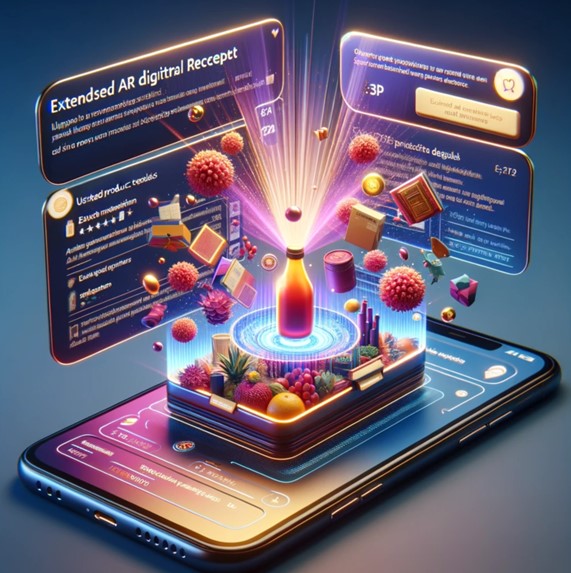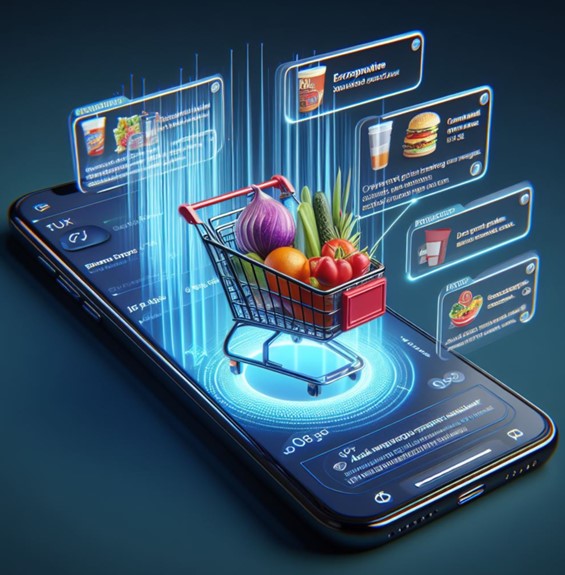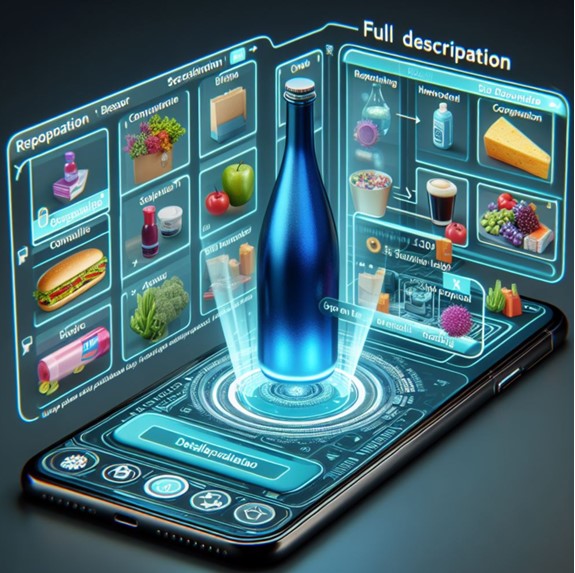Authors:
Joshi Bhavik
Abstract:
This disclosure proposes an Interactive Itemized Digital Receipt that represents a significant advancement in technology, merging the ease of digital receipts with the captivating features of Augmented Reality (AR). This concept is poised to transform the post-purchase journey for consumers by providing essential information and elevating user interaction.
Background:
The traditional shopping experience has been quite static, with limited opportunities for customer engagement post-purchase. Customers often lack detailed knowledge about their purchased products, including usage instructions, health benefits, nutritional details, side effects, or recycling procedures. As a result, they might not fully utilize the product, misuse it, or discard it improperly. Additionally, customers often struggle to discover new products tailored to their preferences, leading to missed opportunities for both them and the businesses.
Known Solutions and Their Drawbacks
User Manuals: Many products come with user manuals, providing instructions and other product-related information. However, these can be tedious to read, difficult to understand, and can get lost or damaged.
Digital Receipts: Digital receipts provide a convenient and environmentally friendly way to record purchases, but their potential for further customer engagement has remained largely untapped.
Email Marketing: Companies often use email marketing to suggest new products. They send the survey emails and ask customers to review the product However, these aren't always personalized, leading to customer disinterest or annoyance.
Customer Service: Customers can contact customer service for product queries. However, this can be time-consuming and not always available in real-time.
The Need for an Additional Solution:
Given the drawbacks of known solutions, there's a need for an engaging, user-friendly platform that can provide detailed product information post-purchase and suggest new products based on personal preferences. The solution should be accessible on-demand, easy to understand, and interactive, enhancing the overall shopping experience.
Description:
Upon completion of a purchase, customers receive a digital receipt that carries unique AR markers. When these AR markers are scanned with a smart device's camera, it triggers an engaging AR experience on an AR device's screen. This allows the customers to visualize and interact with various types of information about their purchased product in a fun and engaging manner.
Product Information: Product information in the digital receipt upon clicking a specific item which were bought, that will give the information about the expiry date, Ingredients, product's certification and the details of manufacturer and source/origin of the product.
Product Setup Instructions: Detailed visual guides and 3D animations can be presented in AR for assembling, installing, or using a product, making the setup process more straightforward and engaging.
Product Use Cases: The AR experience can present a series of scenarios demonstrating the practical application of the product, showcasing its features, benefits, and optimal usage methods.
Health Benefits and Nutritional Information: For food and health-related products, AR can provide an immersive way to present health benefits, nutritional details, Side effects and other vital product information, making it easier to comprehend for the user.
Recycling Instructions: An AR module can illustrate the correct way to recycle the product once it has served its purpose, emphasizing the importance of environmental conservation.
Side Effects and Warnings: Particularly useful for medicines or products with potential risks, AR can provide vivid demonstrations of potential side effects and safety warnings.
Product Preview and Personalized Shopping: AR technology can also be utilized to preview other products. Using machine learning algorithms and analyzing the customers' shopping habits, personalized suggestions can be offered for a tailored shopping experience.
For Non-AR Customers
For customers who prefer not to use or do not have access to AR technology, the same product information and personalized shopping suggestions can be made available through other digital means. There will be the links within the names of each item which will show the required information to the users without needing any barcode or any other device.
Benefits and Future Prospects
The Interactive Itemized Digital Receipt with AR Experience holds great promise in improving customer engagement, enhancing the shopping experience, and delivering valuable product information in an accessible and engaging format. It can also help businesses analyze customer behavior more accurately, leading to more targeted marketing and improved customer service.
Given the rise of AR technology and the convenience of digital receipts, this interactive receipt could soon become a mainstay in the retail and e-commerce sector, revolutionizing the way businesses interact with their customers post-purchase. Even non-AR users will have great post purchase experience as they would have these information on their fingertip and they can access them whenever they need.




Enabling Technology:
AR technology has been utilized in various forms, for example in apps like IKEA Place (which allows users to place virtual furniture in their space) or AR fitting rooms in fashion retail.
Digital receipts are widely used, but their functionality has been limited to recording purchases. An example of a step further is Square's digital receipts, which include feedback and customer engagement elements.
The use of machine learning for personalized product recommendations is well-documented in online retailers like Amazon, but hasn't been integrated within a post-purchase, digital receipt context.
Walmart is using AR to help customers find products in its stores. Customers can use the Walmart app to scan a product barcode and see information about the product, such as reviews, nutritional information, and recipes.
IKEA is using AR to help customers visualize how furniture will look in their homes. Customers can use the IKEA app to scan a room in their home and see how different pieces of furniture would fit.
Sephora is using AR to help customers try on makeup products. Customers can use the Sephora app to see how different shades of lipstick or eyeshadow would look on their face.
TGCS Reference 3979









